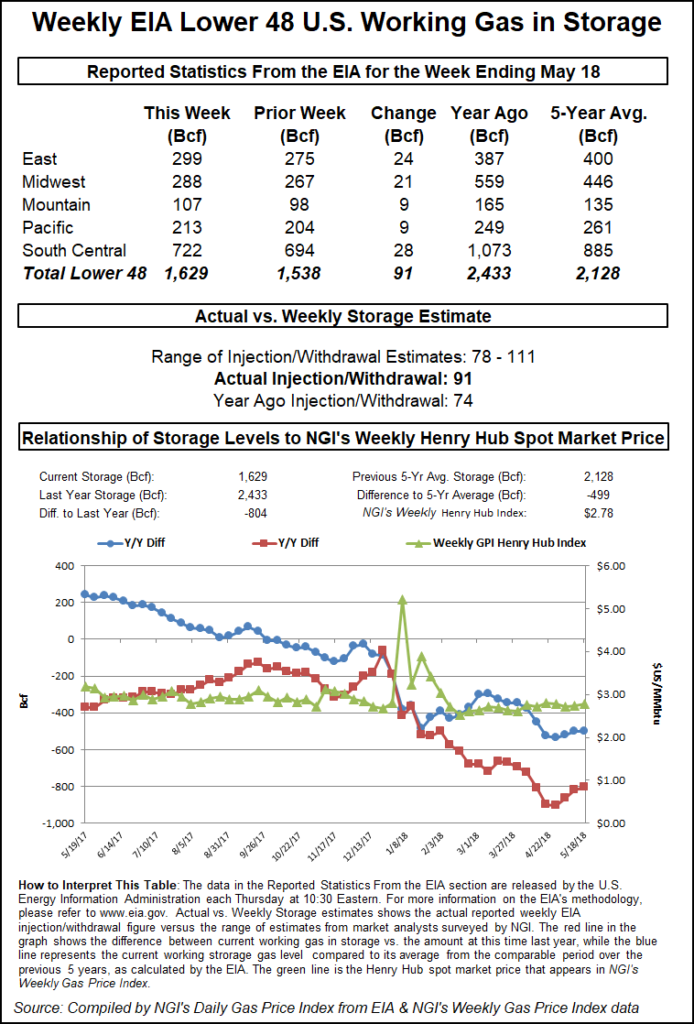Markets | NGI All News Access | NGI Data
EIA Storage Build Matches Surveys; Natural Gas Futures Gain Ground
The Energy Information Administration (EIA) on Thursday reported a natural gas storage injection that confirmed consensus estimates for a larger-than-average build shy of the triple-digit mark, and futures gained a few cents on the news.

For the week ending May 18, EIA reported a 91 Bcf injection into Lower 48 gas stocks, right in line with surveys and larger than the 74 Bcf build recorded last year and the five-year average 89 Bcf injection.
In the minutes following the release of EIA’s 10:30 a.m. ET report, the June contract climbed steadily from around $2.910 to just shy of $2.940. By 11 a.m. ET, June was trading around $2.933, up about 2 cents from Wednesday’s settle.
Prior to the report, the market had been looking for a build close to the actual number, according to major surveys.
A Reuters survey of traders and analysts on average had predicted a 92 Bcf injection for the week ending May 18, with responses ranging from 85 Bcf to 100 Bcf. A Bloomberg survey had produced a median 91 Bcf injection, with responses from 78 Bcf to 111 Bcf. ION Energy had predicted a 90 Bcf build, while Genscape Inc. had predicted a 94 Bcf injection for the period. Intercontinental Exchange EIA futures for this week’s report settled Wednesday at an injection of 91 Bcf.
Bespoke Weather Services had called for a 89 Bcf build and said following the EIA release that on a seasonal basis the supply/demand balance “remains fairly loose to the five-year average thanks to sizable year-over-year production growth, and indicates that it will be difficult for the June contract to break $2.97-3.00 resistance into expiry without further” gas-weighted degree day (GWDD) gains.
“Forecasts remain impressive enough for a run up into that resistance range to remain on the table…but any GWDD losses quickly allow prices to reverse back lower.”
Total working gas in underground storage as of May 18 stood at 1,629 Bcf, versus 2,433 Bcf last year and five-year average inventories of 2,128 Bcf. The year-on-year storage deficit decreased week/week from 821 Bcf to 804 Bcf, while the year-on-five-year deficit narrowed slightly from 501 Bcf to 499 Bcf, EIA data show.
By region, the South Central region saw the largest injection for the week at 28 Bcf, with EIA reporting 19 Bcf injected into nonsalt and 10 Bcf into salt. The East saw a build of 24 Bcf, while 21 Bcf was injected in the Midwest. The Mountain and Pacific regions each saw 9 Bcf refilled for the week, according to EIA.
© 2024 Natural Gas Intelligence. All rights reserved.
ISSN © 1532-1231 | ISSN © 2577-9877 |
